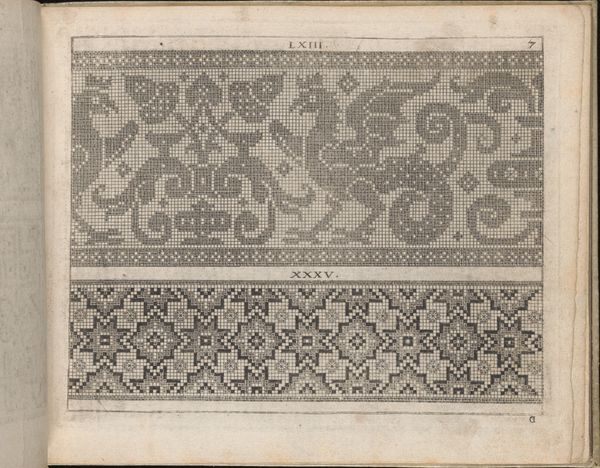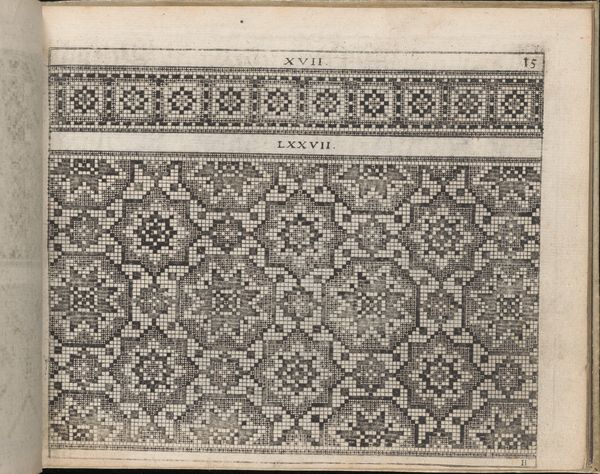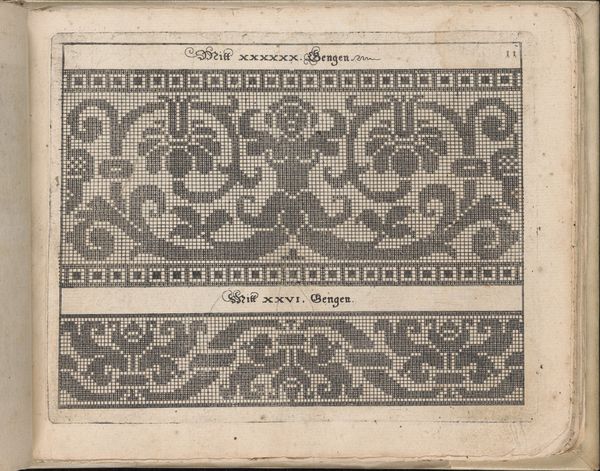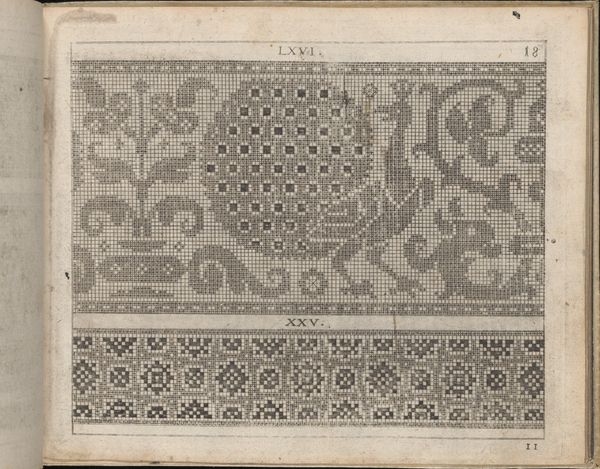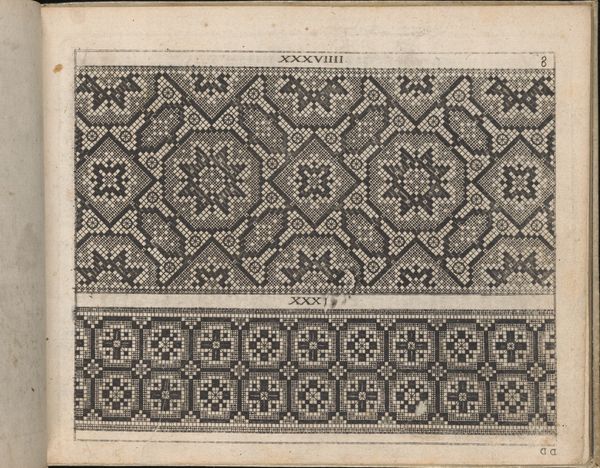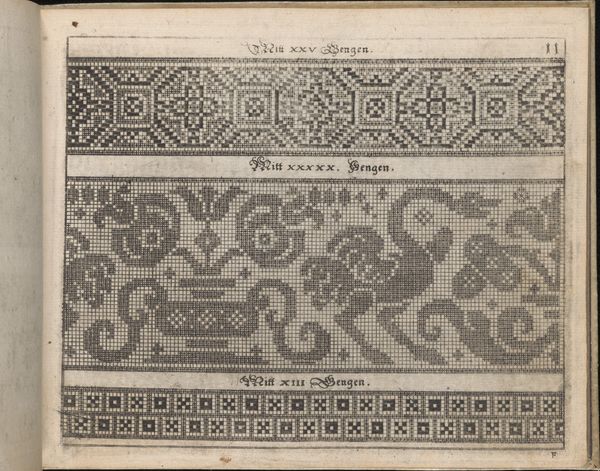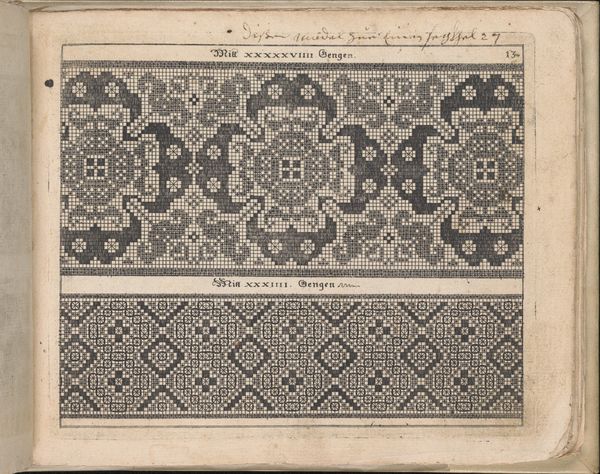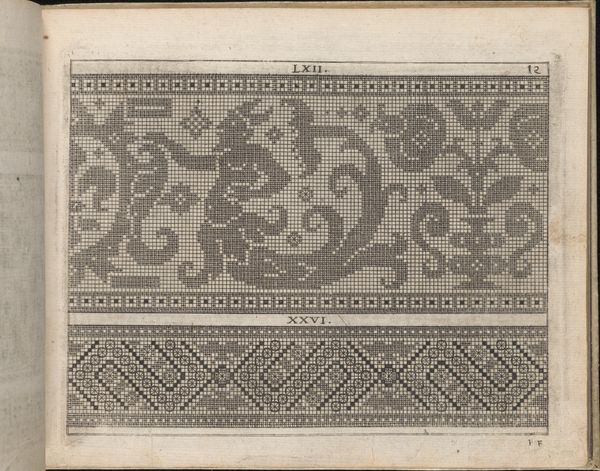
drawing, graphic-art, ornament, print, paper, engraving
#
drawing
#
graphic-art
#
ornament
# print
#
book
#
paper
#
engraving
#
monochrome
Dimensions: Overall: 5 11/16 x 7 1/16 x 3/4 in. (14.5 x 18 x 1.9 cm)
Copyright: Public Domain
Editor: Here we have Johann Sibmacher’s "Newes Modelbuch in Kupffer," specifically page 22r, from 1604. It’s a monochrome engraving, filled with geometric and organic shapes. It’s intriguing how these designs would be transferred to textiles... what catches your eye in this piece? Curator: Well, immediately I’m drawn to how these aren’t merely patterns; they're potent symbols communicating status and cultural identity. Think of each motif as a word within a visual language. What messages do you believe they intended to communicate to their audience? Editor: That's interesting. The upper pattern with those cross shapes feels somehow... ordered, perhaps conveying stability? But then the lower design has those swirling forms that seem much more free and expressive. Could the difference in styles signify anything beyond just aesthetics? Curator: Precisely! The geometric patterns often resonated with ideas of divine order and social harmony. In contrast, the organic forms, with their curvilinear flourishes, evoke natural abundance and perhaps even a sense of personal expression, a departure from more rigid structures. It could point towards a society at odds between tradition and emerging new social ideas, but I wonder, which style attracts you more? Editor: I think I like the bottom design best. It just feels...more alive! It also made me think of very similar textiles made throughout Europe that share similar design structures. Curator: This echoes the role these designs played. By referencing earlier designs, the images would communicate wealth, class, regionality, familial connection and other socio-political constructs, reinforcing those very principles through a sense of belonging and cultural identity. So, in viewing the images themselves as communicative symbols that evolve and change over generations and cultural locations. Fascinating, isn’t it? Editor: Absolutely! I never considered these patterns holding that much symbolism before. It completely transforms how I see these "Newes Modelbuch". Curator: Exactly! It’s about understanding cultural memory—how visual symbols act as a thread connecting us to the past.
Comments
No comments
Be the first to comment and join the conversation on the ultimate creative platform.

